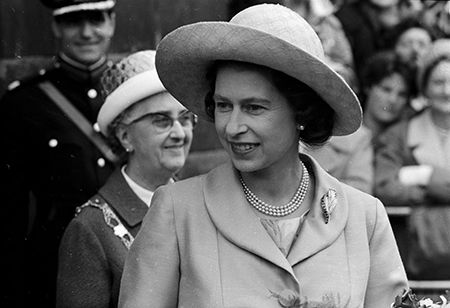Christopher Viney is Archive Digitisation Officer at Historic Environment Scotland
Over the past decade issues in access to archival collections have been thrown sharply into focus demonstrating the value of digitising analogue archival material. This provides a greater level of access and mitigates potential barriers that can often shut people out of our institutions. Indeed, digitisation and digital preservation provides a key tool in the work of Historic Environment Scotland to deliver on its vision ‘to make sure Scotland’s heritage is cherished, understood, shared and enjoyed with pride by everyone’. After the fantastic work of the Archive Digital Project, showcased in the online exhibition “Beyond the Physical”, Historic Environment Scotland has continued to improve access to and preservation of our collections. One such recent project has been the digitisation of The Scotsman Collection.
The Scotsman collection is made up of over 9,000 photographic negatives in a range of formats such as 35mm and 2¼ film as well as 5x4 glass plates. Primarily dating from the 1960s the collection provides a wide variety of content and is a rich resource for charting social history capturing local events, sports, weddings, and even royal visits. However due to the large size of the collection it is unwieldy for the researcher and the negatives are vulnerable to increased deterioration if regularly handled. This makes the collection a prime target for digitisation.

Image © The Scotsman Publications Ltd. Licensor www.scran.ac.uk
Queen Elizabeth II on a visit to Thurso
Due to the range of formats and to maximise output we utilise two different types of scanners to digitise the collection, a flatbed scanner for glass plates and film and a virtual drum scanner for the film negatives. For both, we produce 8-bit grey scale TIFFS at 400ppi (pixels per inch). As the original images are black and white this reduces the file size, cutting down on storage requirements as well as processing speeds. The TIFF format as a non-proprietary lossless file format is perfect for our digital preservation needs whilst also maintaining a high-quality image. This quality and resolution ensure we have a useful and dependable archival master, from which we can produce prints and further digital files for dissemination at any size we need whilst still preserving the image quality.
Once the digital surrogate had been created, we then do a minimum amount of image processing to ensure the resultant images are both accurate to their analogue original whilst also being a useable image. One example of the process is that our flatbed scanner produces greater tonal range in areas of shadow when scanned as a negative and is inverted in image processing software rather than scanning it as a positive from the beginning. By utilising this methodology, we have created over 8,000 high quality digital images so far.

Image © The Scotsman Publications Ltd. Licensor www.scran.ac.uk
A petition thanking The Beatles for their visit to Edinburgh
The digitisation of The Scotsman negatives sits within the Digital Repository Team who ensure the safe ingest and storage of the increasingly born digital nature of accessions, as well as supporting the archive photographers in the production of digital surrogates. By drawing on the expertise within the team we guarantee that we follow digital preservation best practice in all our digitisation projects before we begin even creating digital images.
It is for this reason that before we begin a digitisation project, we produce a digitisation specification. We draw on the knowledge of the archivists, digital archivists, conservators and photographers. This interdepartmental collaboration allows us to embed digital preservation best practice from the beginning of the project whilst producing high quality images that are useful to the archive and our users.
By following our specifications, we have given our digital surrogates the best chance at survival from the very start of the project rather than having to retroactively fix (if even possible) issues with the digital collection. Through this process we will continue to make our valuable collections more accessible, and the files will be protected for years to come.














































































































































Comments